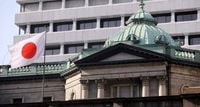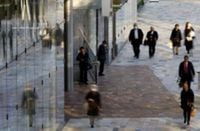Business confidence among Japan’s major manufacturers has climbed for the second consecutive quarter, offering a cautiously optimistic outlook for the country’s export-driven economy as it faces ongoing challenges from U.S. tariffs and shifting global demand. The Bank of Japan’s (BOJ) Tankan survey, released at the end of September 2025, showed the sentiment index for large manufacturers rising to +14, up from +13 in June and marking the highest level since December 2024. This result, while just shy of market forecasts, underscores a resilience in Japanese industry in the face of trade headwinds and monetary policy uncertainty.
The Tankan, a closely watched quarterly survey conducted by the BOJ, canvassed 8,870 firms between August 27 and September 30, 2025, with an impressive 99.4% response rate. The survey’s headline diffusion index reflects the percentage of companies reporting favorable business conditions minus those reporting unfavorable ones. According to Reuters, the latest reading matched the median economist forecast and was led by improvements in the ceramics and shipbuilding industries, as well as the motor vehicle sector, which saw sentiment climb to 10 from 8 in June.
However, the mood was less buoyant in other corners of the manufacturing sector. Confidence among iron and steel firms dropped sharply to -14 from -3, reflecting the ongoing burden of higher levies and softer global demand. Meanwhile, the outlook for large manufacturers is projected to worsen to +12 in the coming quarter, with many firms expressing concern over the impact of U.S. trade policy. As a BOJ official told reporters, “Firms from a wide range of sectors pointed to concern over the impact of U.S. trade policy.”
Japan’s non-manufacturing giants, including those in the service sector, maintained their sentiment at +34, unchanged from the previous quarter and slightly above some market forecasts, as reported by RTTNews. Yet, this stability masks significant turbulence beneath the surface. The hotel and restaurant sector, for instance, saw confidence plunge to 26 from 45, a slide attributed to a slowdown in inbound tourism. While senior economist Kei Fujimoto of SuMi Trust noted that inbound tourism is “helping” the broader economy, the sector’s performance suggests the recovery is uneven.
The Tankan’s findings are particularly significant as the BOJ weighs its next policy move. After years of ultra-loose monetary policy aimed at combating deflation and stimulating investment, the central bank raised its benchmark rate to 0.5% in January 2025 and has since held steady through five consecutive meetings. With inflation running above the BOJ’s 2% target for more than three years—corporate expectations for inflation remained steady at 2.4% for one, three, and five years ahead—the case for further tightening is mounting. As Capital Economics’ Marcel Thieliant remarked, “The latest Tankan survey confirms that Japan's economy is shrugging off trade tensions and supports our long-held view that the Bank of Japan will resume its tightening cycle this month.”
Market participants are betting on a roughly 60% chance that the BOJ will hike rates to 0.75% at its October 2025 meeting. The yen’s recent strengthening against major currencies, including a two-week high against the euro and a one-month high against the pound, further reflects expectations that Japan is on the cusp of policy normalization. According to RTTNews, traders are closely watching U.S. economic data and geopolitical developments as they anticipate the BOJ’s next move.
Trade policy remains a major source of uncertainty. In July 2025, Japan reached a deal with the U.S. that reduced auto tariffs from 25% to 15%, a change formalized by an executive order from President Donald Trump in September. While this alleviated some pressure on Japanese automakers, other sectors continue to face higher tariffs, and the outlook for exports remains clouded. As Yuichi Kodama, chief economist at the Meiji Yasuda Research Institute, explained to Kyodo News, “The improvement (in the sentiment of large manufacturers) was limited as uncertainties persist even after Japan and the United States struck a deal.” Exports and factory output slumped in August, a warning sign that the pain from higher U.S. levies could intensify in the coming months.
Despite these headwinds, Japanese firms are maintaining upbeat investment plans. Big companies expect to boost capital expenditure by 12.5% in the current fiscal year ending March 2026, up from an 11.5% increase projected in June and beating market forecasts. This willingness to invest suggests a degree of confidence in the domestic recovery, even as external risks loom large. Japan’s economy expanded at an annualized rate of 2.2% in the first quarter of 2025, buoyed by robust consumption and a rebound in certain export markets.
Still, the Tankan survey revealed a less rosy outlook for the months ahead. Both large manufacturers and non-manufacturers expect business conditions to worsen, reflecting concerns about slowing U.S. demand, persistent tariff pressures, and rising labor costs. Some firms also cited the risk of higher prices eroding domestic consumption, a factor that could weigh on growth if inflation continues to outpace wage gains.
On the currency front, Japanese companies expect the U.S. dollar to trade at 145.68 yen in fiscal year 2025, nearly unchanged from previous expectations. The yen’s recent gains, however, have added another layer of complexity for exporters, who must navigate both currency fluctuations and tariff regimes as they chart their strategies for the coming year.
In the manufacturing sector more broadly, the latest purchasing managers’ index (PMI) data from Jibun showed continued contraction in September, with a score of 48.5, down from 49.7 in August and remaining below the threshold that separates expansion from contraction. This points to ongoing challenges for smaller manufacturers and suppliers, even as headline confidence among major firms ticks upward.
Ultimately, the BOJ faces a delicate balancing act. While the Tankan survey and other economic indicators highlight resilience and pockets of strength, the risks posed by global trade tensions, volatile demand, and shifting monetary policy remain significant. As Yoshiki Shinke of Dai-ichi Life Research Institute observed, “All in all, the tankan showed Japan's economy is in fairly good shape and unlikely to suffer a severe slump from tariffs. But the tankan doesn't tell us much about how the U.S. economy will evolve and how Japan could be hit.”
With the BOJ’s October meeting fast approaching, all eyes are on whether policymakers will seize the moment to further tighten policy or opt for patience amid persistent uncertainties. For now, Japan’s business leaders are navigating a landscape marked by cautious optimism, ongoing challenges, and the ever-present specter of global economic turbulence.


